-
 Bitcoin
Bitcoin $83,418.1551
-0.31% -
 Ethereum
Ethereum $1,808.8979
-0.41% -
 Tether USDt
Tether USDt $0.9999
0.02% -
 XRP
XRP $2.1463
1.00% -
 BNB
BNB $593.3907
-0.49% -
 Solana
Solana $120.0979
-1.63% -
 USDC
USDC $1.0001
0.00% -
 Dogecoin
Dogecoin $0.1689
-0.83% -
 Cardano
Cardano $0.6536
-1.17% -
 TRON
TRON $0.2370
-0.75% -
 Chainlink
Chainlink $12.8454
-0.75% -
 UNUS SED LEO
UNUS SED LEO $9.1245
-0.51% -
 Toncoin
Toncoin $3.2503
-4.22% -
 Stellar
Stellar $0.2527
-2.58% -
 Avalanche
Avalanche $17.8357
-1.69% -
 Shiba Inu
Shiba Inu $0.0...01231
-0.09% -
 Sui
Sui $2.2068
-1.49% -
 Hedera
Hedera $0.1623
-0.93% -
 Litecoin
Litecoin $82.5360
-2.34% -
 Polkadot
Polkadot $3.9567
-1.88% -
 Bitcoin Cash
Bitcoin Cash $306.9330
1.70% -
 MANTRA
MANTRA $6.2879
0.30% -
 Dai
Dai $1.0001
0.01% -
 Bitget Token
Bitget Token $4.4588
-1.48% -
 Ethena USDe
Ethena USDe $0.9992
0.01% -
 Pi
Pi $0.6376
24.33% -
 Hyperliquid
Hyperliquid $11.9460
0.08% -
 Monero
Monero $213.4997
-0.58% -
 Uniswap
Uniswap $5.8533
-0.79% -
 OKB
OKB $52.7441
6.99%
What is a cross-chain bridge? How does it achieve interoperability between different blockchains?
Cross-chain bridges enable asset and data transfer between blockchains, enhancing liquidity and allowing developers to build versatile dApps across multiple networks.
Apr 04, 2025 at 03:56 pm
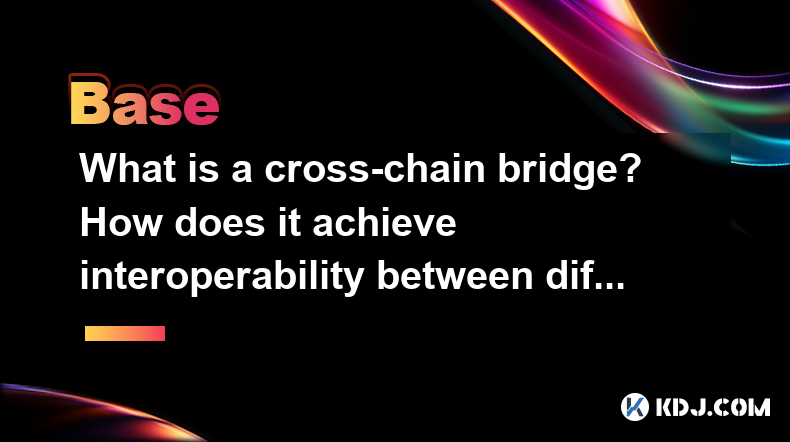
A cross-chain bridge is a crucial tool in the world of cryptocurrencies that enables the transfer of assets and data between different blockchain networks. Cross-chain bridges facilitate interoperability, allowing users to leverage the unique features of various blockchains while maintaining the ability to move their assets freely. This article will delve into the concept of cross-chain bridges, their mechanisms, and how they achieve interoperability between different blockchains.
What is a Cross-Chain Bridge?
A cross-chain bridge is essentially a protocol or a set of smart contracts that connect two or more blockchain networks. These bridges allow for the seamless transfer of tokens, data, and other digital assets from one blockchain to another. By doing so, they break down the silos that traditionally exist between different blockchain ecosystems, enabling a more interconnected and efficient crypto environment.
How Do Cross-Chain Bridges Work?
The operation of a cross-chain bridge involves several key steps. When a user wants to transfer an asset from one blockchain to another, the bridge locks the asset on the source blockchain. This locking mechanism ensures that the asset cannot be used on the original chain while it is being transferred. Once locked, the bridge then mints an equivalent asset on the destination blockchain. This minted asset represents the original asset and can be used within the new blockchain's ecosystem.
To complete the transfer, the user can later decide to move the asset back to the original blockchain. In this case, the bridge burns the minted asset on the destination blockchain and unlocks the original asset on the source blockchain, returning it to the user. This process ensures that the total supply of the asset remains constant across both chains.
Types of Cross-Chain Bridges
There are several types of cross-chain bridges, each with its own method of achieving interoperability. The most common types include:
Locked and Minted Bridges: As described earlier, these bridges lock an asset on one blockchain and mint an equivalent asset on another. This method is widely used due to its simplicity and effectiveness.
Wrapped Tokens: In this approach, a token from one blockchain is wrapped into a new token on another blockchain. The wrapped token is backed by the original token, which is held in a smart contract. This method is often used for transferring assets like Bitcoin to Ethereum.
Sidechains: Sidechains are separate blockchains that are pegged to a main blockchain. Assets can be moved between the main chain and the sidechain, allowing for interoperability while maintaining the security of the main chain.
Atomic Swaps: Atomic swaps enable direct peer-to-peer exchanges of cryptocurrencies across different blockchains without the need for intermediaries. This method relies on smart contracts to ensure that the swap occurs only if both parties fulfill their obligations.
Benefits of Cross-Chain Bridges
Cross-chain bridges offer numerous benefits to the cryptocurrency ecosystem. They enhance liquidity by allowing assets to move freely between different blockchains, which can lead to more efficient markets. Additionally, they enable developers to build decentralized applications (dApps) that can leverage the strengths of multiple blockchains, resulting in more robust and versatile solutions.
Moreover, cross-chain bridges promote innovation by allowing developers to experiment with new features and functionalities across different blockchain networks. This interoperability can lead to the creation of new financial instruments and services, further expanding the capabilities of the crypto space.
Challenges and Risks
Despite their benefits, cross-chain bridges also come with certain challenges and risks. One of the primary concerns is security. Since bridges involve the transfer of assets between different blockchains, they can be vulnerable to hacks and exploits. Ensuring the security of these bridges is crucial to maintaining trust in the system.
Another challenge is the complexity of implementing and maintaining cross-chain bridges. Different blockchains have varying consensus mechanisms, smart contract languages, and other technical specifications, which can make it difficult to create seamless interoperability. Additionally, the regulatory environment surrounding cross-chain bridges can be uncertain, posing further challenges for developers and users.
Examples of Cross-Chain Bridges
Several cross-chain bridges have been developed to facilitate interoperability between different blockchains. Some notable examples include:
Wrapped Bitcoin (WBTC): WBTC is a tokenized version of Bitcoin on the Ethereum blockchain. It allows Bitcoin holders to use their assets within the Ethereum ecosystem, including in decentralized finance (DeFi) applications.
Polkadot: Polkadot is a multi-chain network that enables different blockchains to interoperate and share information. It uses a relay chain to connect various parachains, allowing for seamless asset and data transfer.
Cosmos: Cosmos is another interoperability platform that connects different blockchains through its Inter-Blockchain Communication (IBC) protocol. This allows for the transfer of tokens and other data between connected chains.
Thorchain: Thorchain is a decentralized liquidity network that enables cross-chain swaps between different cryptocurrencies. It uses a unique consensus mechanism called Threshold Signature Scheme (TSS) to facilitate secure and trustless swaps.
How Cross-Chain Bridges Achieve Interoperability
Cross-chain bridges achieve interoperability by creating a standardized method for different blockchains to communicate and exchange assets. This is typically done through a combination of smart contracts and consensus mechanisms that ensure the integrity and security of the transfers.
For instance, in the case of locked and minted bridges, the smart contracts on both the source and destination blockchains work together to lock and mint assets. The consensus mechanisms of both blockchains ensure that these actions are validated and recorded on their respective ledgers, maintaining the integrity of the transfer.
In the case of wrapped tokens, a smart contract on the destination blockchain holds the original asset and issues a new token that represents it. This wrapped token can then be used within the new blockchain's ecosystem, while the original asset remains securely held in the smart contract.
Sidechains achieve interoperability by pegging their assets to the main blockchain. This pegging is typically done through a two-way peg mechanism, where assets can be moved back and forth between the main chain and the sidechain. The consensus mechanisms of both chains ensure that these movements are accurately recorded and validated.
Atomic swaps use smart contracts to facilitate direct exchanges between different blockchains. These smart contracts ensure that the swap only occurs if both parties fulfill their obligations, maintaining the integrity of the exchange.
Frequently Asked Questions
Q: Are cross-chain bridges decentralized?
A: Many cross-chain bridges are designed to be decentralized, relying on smart contracts and consensus mechanisms to operate without a central authority. However, some bridges may involve centralized components, such as custodial services for wrapped tokens. It's important for users to understand the decentralization level of a bridge before using it.
Q: Can cross-chain bridges be used for any type of blockchain?
A: While cross-chain bridges can be developed for a wide range of blockchains, their implementation depends on the specific technical capabilities and consensus mechanisms of the involved blockchains. Some blockchains may be more challenging to connect due to their unique features and security requirements.
Q: What happens if a cross-chain bridge is hacked?
A: If a cross-chain bridge is hacked, the assets held within the bridge could be at risk. This is why security is a critical aspect of cross-chain bridge design. In the event of a hack, the affected assets might be lost, and users would need to rely on the bridge's security measures and any available insurance or compensation mechanisms.
Q: How do cross-chain bridges affect the scalability of blockchains?
A: Cross-chain bridges can potentially improve the scalability of blockchains by allowing assets and data to be moved to less congested networks. However, the bridges themselves can introduce additional complexity and potential bottlenecks, so their impact on scalability depends on their design and implementation.
Disclaimer:info@kdj.com
The information provided is not trading advice. kdj.com does not assume any responsibility for any investments made based on the information provided in this article. Cryptocurrencies are highly volatile and it is highly recommended that you invest with caution after thorough research!
If you believe that the content used on this website infringes your copyright, please contact us immediately (info@kdj.com) and we will delete it promptly.
- Will XRP Hold $2 or Drop to $1?
- 2025-04-06 07:40:12
- title: U.S. stock index futures dipped on Tuesday, signaling a cautious start to the new quarter
- 2025-04-06 07:40:12
- VeChain (VET) Price Prediction: Can the 98% Surge Continue?
- 2025-04-06 07:35:12
- Ethereum (ETH) Price Could Break $3,000 If Historical Trends Continue
- 2025-04-06 07:35:12
- EU Announces Support for IOTA as the Core Technology for Web3 Digital Identity, ePassports and MiCA
- 2025-04-06 07:30:12
- Cardano (ADA) Founder Charles Hoskinson Reveals Plans to Turbocharge Bitcoin's Integration into Decentralized Finance
- 2025-04-06 07:30:12
Related knowledge
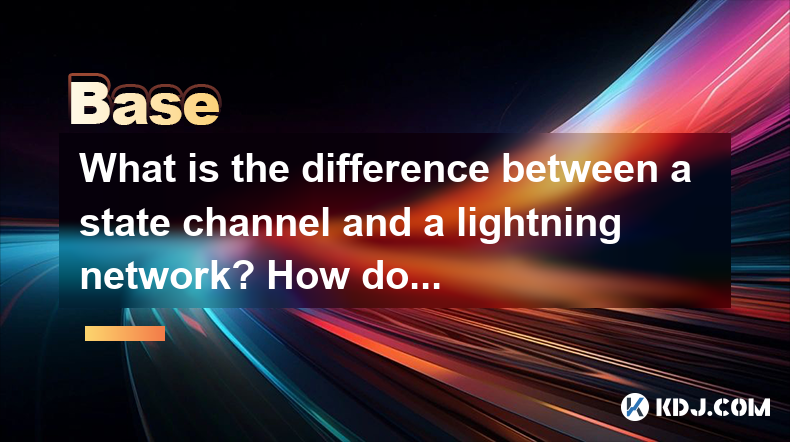
What is the difference between a state channel and a lightning network? How do they improve transaction efficiency?
Apr 05,2025 at 05:21pm
State channels and the Lightning Network are two significant technologies within the cryptocurrency ecosystem aimed at improving transaction efficiency on blockchain networks. Both solutions address the scalability issues of blockchain systems, particularly in handling a high volume of transactions quickly and with low fees. However, they operate differ...

Why is the oracle called the bridge between blockchain and the real world?
Apr 04,2025 at 04:00am
The concept of an oracle in the cryptocurrency and blockchain world is crucial for understanding how these decentralized systems interact with external data. The oracle is often referred to as the bridge between blockchain and the real world because it serves as a vital intermediary that fetches, verifies, and transmits off-chain data to the on-chain en...
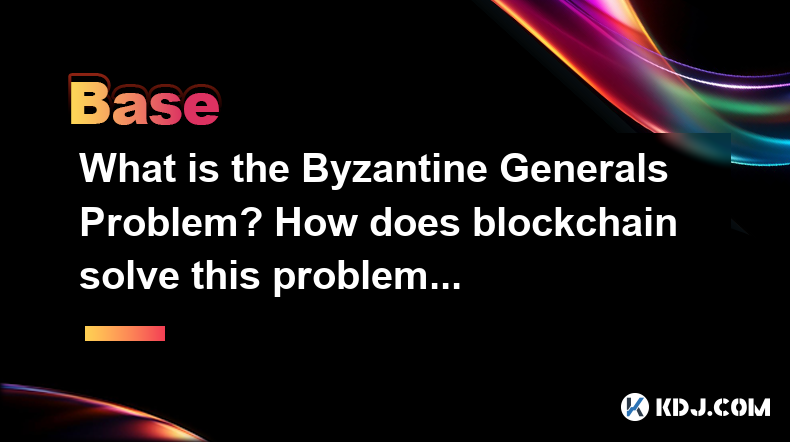
What is the Byzantine Generals Problem? How does blockchain solve this problem?
Apr 05,2025 at 06:29am
The Byzantine Generals Problem is a classic problem in the field of distributed computing and computer science, which has significant implications for the reliability and security of decentralized systems, including blockchain technology. This problem is named after a hypothetical scenario involving several generals of the Byzantine army who must coordi...
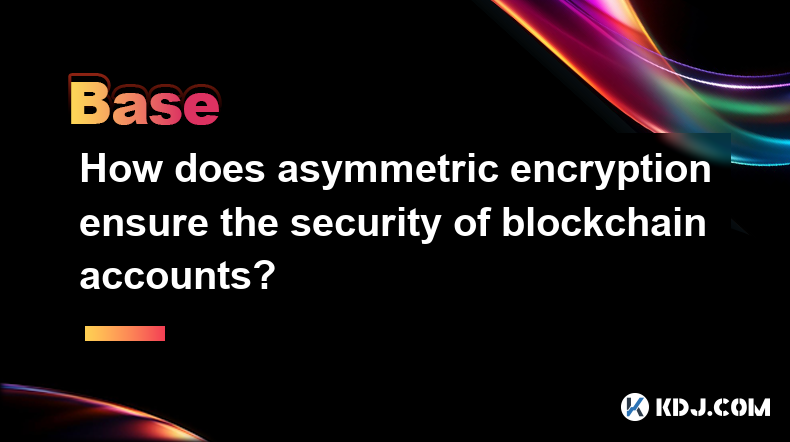
How does asymmetric encryption ensure the security of blockchain accounts?
Apr 06,2025 at 07:50am
Asymmetric encryption plays a critical role in securing blockchain accounts by providing a robust method of safeguarding private keys and ensuring secure transactions. This article delves into how asymmetric encryption works and why it is indispensable for the security of blockchain accounts. What is Asymmetric Encryption?Asymmetric encryption, also kno...

What role does the Merkle tree play in the blockchain? Why can it verify data integrity?
Apr 04,2025 at 01:29pm
The Merkle tree plays a crucial role in the blockchain, primarily due to its ability to efficiently and securely verify data integrity. This article will delve into the structure of a Merkle tree, its implementation in blockchain, and how it ensures the integrity of data. Understanding the Structure of a Merkle TreeA Merkle tree, also known as a hash tr...
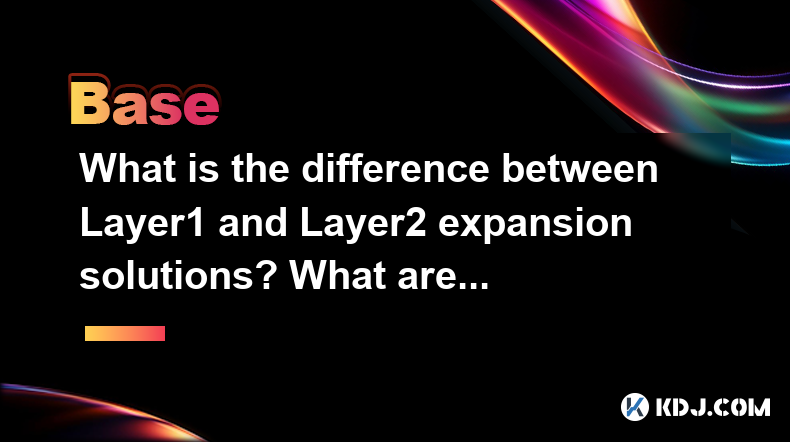
What is the difference between Layer1 and Layer2 expansion solutions? What are their advantages and disadvantages?
Apr 05,2025 at 12:49pm
In the world of cryptocurrencies and blockchain technology, scalability is a critical issue that developers and users alike grapple with. To address this, the industry has developed various solutions, primarily categorized into Layer1 and Layer2 expansion solutions. Understanding the differences between these two approaches, along with their respective ...

What is the difference between a state channel and a lightning network? How do they improve transaction efficiency?
Apr 05,2025 at 05:21pm
State channels and the Lightning Network are two significant technologies within the cryptocurrency ecosystem aimed at improving transaction efficiency on blockchain networks. Both solutions address the scalability issues of blockchain systems, particularly in handling a high volume of transactions quickly and with low fees. However, they operate differ...

Why is the oracle called the bridge between blockchain and the real world?
Apr 04,2025 at 04:00am
The concept of an oracle in the cryptocurrency and blockchain world is crucial for understanding how these decentralized systems interact with external data. The oracle is often referred to as the bridge between blockchain and the real world because it serves as a vital intermediary that fetches, verifies, and transmits off-chain data to the on-chain en...

What is the Byzantine Generals Problem? How does blockchain solve this problem?
Apr 05,2025 at 06:29am
The Byzantine Generals Problem is a classic problem in the field of distributed computing and computer science, which has significant implications for the reliability and security of decentralized systems, including blockchain technology. This problem is named after a hypothetical scenario involving several generals of the Byzantine army who must coordi...

How does asymmetric encryption ensure the security of blockchain accounts?
Apr 06,2025 at 07:50am
Asymmetric encryption plays a critical role in securing blockchain accounts by providing a robust method of safeguarding private keys and ensuring secure transactions. This article delves into how asymmetric encryption works and why it is indispensable for the security of blockchain accounts. What is Asymmetric Encryption?Asymmetric encryption, also kno...

What role does the Merkle tree play in the blockchain? Why can it verify data integrity?
Apr 04,2025 at 01:29pm
The Merkle tree plays a crucial role in the blockchain, primarily due to its ability to efficiently and securely verify data integrity. This article will delve into the structure of a Merkle tree, its implementation in blockchain, and how it ensures the integrity of data. Understanding the Structure of a Merkle TreeA Merkle tree, also known as a hash tr...

What is the difference between Layer1 and Layer2 expansion solutions? What are their advantages and disadvantages?
Apr 05,2025 at 12:49pm
In the world of cryptocurrencies and blockchain technology, scalability is a critical issue that developers and users alike grapple with. To address this, the industry has developed various solutions, primarily categorized into Layer1 and Layer2 expansion solutions. Understanding the differences between these two approaches, along with their respective ...
See all articles





















































































